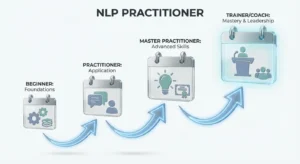Hiring the right talent can make or break a business. In today’s competitive job market, it’s not just about filling roles; it’s about attracting individuals who align with your company’s values and long-term goals. Ineffective hiring leads to misaligned employees, wasted resources, and high turnover.
To ensure your team thrives, you need strategic approaches that go beyond the basics. By crafting precise job descriptions, utilizing diverse sourcing methods, and refining your interview process, you can attract top performers who will grow with your company and drive results.
Let’s explore nine proven strategies to master the art of hiring and build a dynamic, high-performing team.
Strategy 1: Craft Clear, Compelling Job Descriptions

One of the first stumbling blocks companies encounter is unclear job descriptions. Often, businesses list out qualifications or skills without giving potential candidates a real sense of what the role entails or how they’ll contribute to the organization’s success. This leads to an influx of unqualified applicants or, worse, qualified candidates not applying because they don’t understand the impact they could make.
To attract the right people, your job descriptions need to be more than a list of tasks. They should highlight the role’s significance and how it fits into your larger company vision. It’s important to define what success looks like in the role, not just in terms of skills but in terms of values and long-term contributions. A clear, engaging job description will naturally attract candidates who not only meet the technical qualifications but are excited to contribute to your mission.
Strategy 2: Prioritize Cultural Fit Over Skills

Another common issue businesses face is hiring candidates who are technically competent but don’t align with the company’s culture. This often leads to frustration on both sides where the new hire doesn’t feel comfortable or engaged, and the team struggles with integration and collaboration. When focusing solely on skills, you miss an essential element: cultural fit.
To avoid this, focus your hiring process as much on a candidate’s alignment with your company’s core values and work environment as on their technical abilities. You can teach skills, but you cannot easily change someone’s attitude or work style to fit your culture. When evaluating candidates, ask yourself: Does this person align with the way we work? Will they thrive in our environment? Cultural fit leads to stronger team dynamics and higher retention.
Strategy 3: Use Behavioral Interview Questions to Gauge Real Experience

A key mistake in hiring is relying too much on hypothetical questions during interviews. Asking candidates how they might handle a situation often yields idealized responses that don’t reflect their true abilities or past performance. This can result in hiring individuals who, once faced with real-world challenges, struggle to perform.
Instead, focus on behavioral interview questions. Ask candidates about specific situations they’ve encountered in the past. how they handled a challenge, managed a conflict, or navigated a tight deadline. Their past behavior is often the best indicator of how they will perform in the future. When you dig into real experiences, you uncover their problem-solving abilities, adaptability, and resilience, which are essential for success in any role.
Strategy 4: Streamline Your Hiring Process to Avoid Losing Top Talent

Many companies find themselves losing out on top candidates because their hiring process is too slow or complex. With multiple interview rounds, delays in decision-making, or inconsistent communication, businesses risk frustrating their candidates, who may accept offers from faster-moving competitors.
Streamlining your process is essential. Evaluate where the bottlenecks are and cut unnecessary steps without compromising on quality. Speed and efficiency are key here. When candidates are left waiting too long, they often lose interest or feel undervalued. By ensuring your hiring process is smooth and timely, you demonstrate respect for the candidate’s time and interest in bringing them on board.
Strategy 5: Leverage Diverse Sourcing Channels to Expand Your Talent Pool

Another common pitfall is relying too heavily on traditional job boards, which can limit the variety of candidates you reach. When companies rely on the same sources, they often end up with a homogenous talent pool, missing out on individuals who bring fresh perspectives and unique skills.
To overcome this, it’s essential to leverage multiple source channels. Expand beyond standard platforms by tapping into professional networks, using social media, and encouraging employee referrals. Engaging with diverse platforms gives you access to candidates with a broader range of experiences and insights, ultimately leading to more innovative teams.
Strategy 6: Offer Competitive Compensation and Growth Opportunities

Today’s top talent is not just looking for a paycheck; they want meaningful work and growth opportunities. Offering a competitive compensation package that includes more than just salary is key. Benefits such as flexible work arrangements, health coverage, wellness programs, and professional development opportunities are crucial to attracting high-performing individuals.
But it doesn’t stop there. Top talent wants to see a future within the company. Show candidates a clear path for career progression, mentorship programs, or leadership training. When candidates know they can grow within your organization, they’re more likely to choose and stay with you.
Strategy 7: Provide a Positive Candidate Experience

The hiring process doesn’t just evaluate the candidate; it shapes their perception of your company. A negative experience, such as long waiting times or poor communication, can result in candidates withdrawing and may damage your employer’s brand.
Ensure that the entire process, from initial contact to final decision, is respectful, transparent, and efficient. Open communication, timely responses, and clear expectations help candidates feel valued. Even if they don’t end up being hired, a positive experience strengthens your reputation and makes it more likely they’ll recommend your company to others.
Strategy 8: Strengthen Your Employer Brand to Attract Top Talent

Your employer brand is how candidates perceive your company as a place to work. A strong employer brand built on your company’s culture, values, and employee success stories can help attract top-tier candidates who are excited about your mission.
Share authentic stories of current employees who have grown within the company. Use your website, job descriptions, and social media platforms to showcase your company’s strengths. When candidates resonate with your brand and see it as a place where they can thrive, they’re more likely to apply.
Strategy 9: Leverage Data and Technology to Refine Your Process

Data-driven hiring decisions can help you optimize your recruitment process. By utilizing Applicant Tracking Systems (ATS) and recruitment analytics, you can monitor key metrics such as time-to-hire, cost-per-hire, and source effectiveness. These insights allow you to identify areas for improvement and streamline your approach.
Additionally, using technology to automate initial screenings and communication with candidates can help you manage the process efficiently and avoid losing talent due to slow follow-ups.
Set Yourself Up for Success
The challenges you face in hiring top talent can be overcome with a thoughtful, strategic approach. By crafting clear job descriptions, prioritizing cultural fit, using behavioral interview questions, streamlining your hiring process, leveraging diverse channels, and offering competitive benefits, you’ll position your company as a desirable place to work. Strong employer branding and data-driven decisions will only enhance your ability to secure top performers.
Now is the time to review your current practices and make adjustments to build a hiring process that brings in the best people for the job and ensures they’re set up for long-term success.
Frequently Asked Questions
How can I attract top talent to my company?
Attracting top talent starts with a compelling job description that highlights your company’s values, growth opportunities, and unique culture. Utilize diverse sourcing channels like social media, industry groups, and employee referrals. Offering competitive compensation packages and a clear career path further enhances your appeal.
What should I focus on during the interview process?
Focus on behavioral interview techniques to assess how candidates have handled real-world challenges. Look beyond technical skills and evaluate cultural fit, communication style, and problem-solving abilities. A structured interview process ensures consistency and helps you make better, informed decisions.
How can I ensure candidates align with my company culture?
To assess cultural alignment, clearly communicate your company’s core values and work environment during the hiring process. Include team-based interviews or social interactions to see how candidates engage with existing staff. Hiring for cultural fit promotes long-term success and reduces turnover.
What role does compensation play in attracting top talent?
Competitive compensation packages go beyond salary; offering benefits like health coverage, flexible work options, and development opportunities is key. High-performing candidates seek roles where they feel valued and have room for growth. Tailoring compensation packages can help you stand out to top-tier talent.





